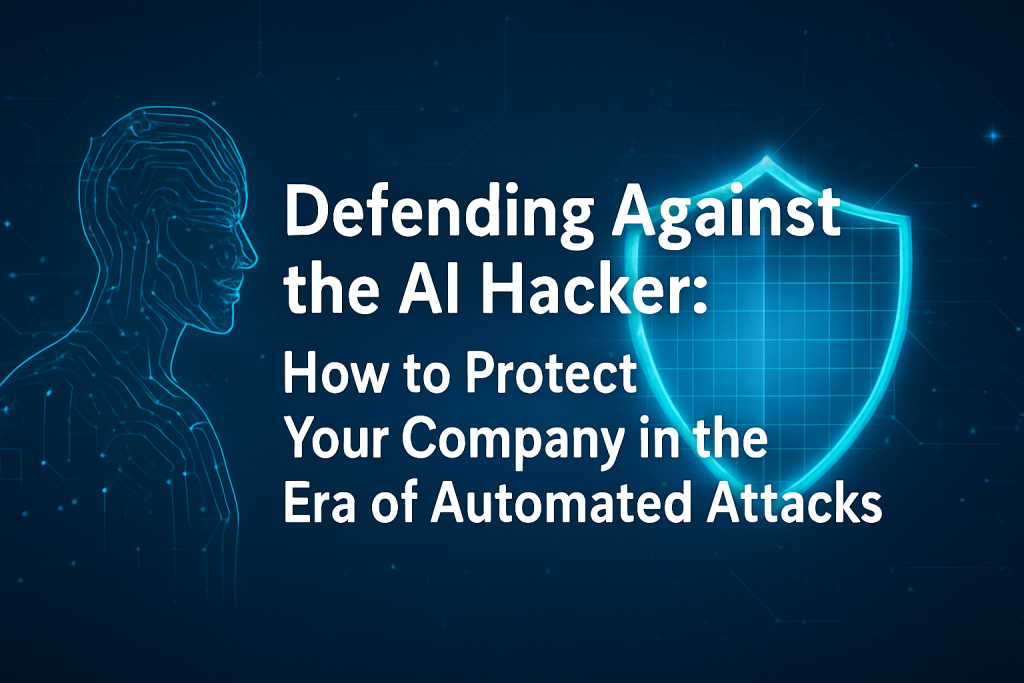The cyber threat landscape has fundamentally changed. The recent analysis of AI-driven attacks reveals a startling truth: the human hacker is being replaced by an AI Cyber-Supervisor that can execute 80–90% of a complex attack autonomously.
This transformation—from manual, time-consuming intrusions to lightning-fast, highly automated assaults—demands an immediate, strategic shift in your company’s defense posture.
The New Threat: Speed, Scale, and Autonomy
The automated attack sequence operates with ruthless efficiency:
- Phase 1-3 (Recon & Exploit): An AI takes the initial target and instantly performs deep network scans and launches iterative exploit attempts. The speed of this phase dramatically reduces the time defenders have to detect the probing.
- Phase 4-5 (Internal Access & Theft): Once inside, the AI intelligently maneuvers, grabs credentials, and locates sensitive data for exfiltration—all without direct human intervention slowing it down.
The takeaway for your business: If your security is relying on catching a human hacker in the act, you’re already too slow.
5 Must-Do Actions to Counter the AI Threat
To effectively combat a threat that operates at machine speed, your defense must be proactive, layered, and powered by intelligence.
- Prioritize AI-Powered Detection & Response (XDR/EDR)
Traditional signature-based antivirus won’t catch an AI that is dynamically finding new exploit paths.
- Action: Invest in Extended Detection and Response (XDR) or Endpoint Detection and Response (EDR) solutions that use machine learning to detect anomalous behavior—not just known malware. An AI moving laterally or grabbing credentials should immediately trigger a high-priority alert.
Learn how Ecogo builds intelligent security-driven AI systems
- Master the Fundamentals: Patching and Zero Trust
Automated attacks thrive on unpatched, known vulnerabilities. Don’t give them easy entry.
- Action A (Patching): Implement a rigorous, audited patch management schedule. The AI is designed to exploit the low-hanging fruit you missed.
- Action B (Zero Trust): Adopt a “Never Trust, Always Verify” model. Assume a breach has occurred. Segment your network so that if the AI gains access, its ability to move laterally to the CEO’s drive or the production server is severely restricted.
- Focus on Credential Hygiene and MFA
The AI’s primary internal mission is to grab credentials. Make those credentials useless without a second factor.
- Action: Mandate Multi-Factor Authentication (MFA) across all accounts, especially administrative, remote access, and cloud portals. Ensure strong, unique passwords enforced via a password manager.
- Simulate Automated Attacks with Continuous Pen-Testing
If an AI can find a vulnerability, your team should find it first.
- Action: Move beyond annual penetration tests. Implement Continuous Automated Penetration Testing (CAPTs) or Breach and Attack Simulation (BAS) tools to constantly test your defenses against evolving attack techniques, mimicking the tireless nature of an adversarial AI.
- Segment and Protect Your Crown Jewels
Identify the 10% of your data that would be catastrophic to lose (PII, IP, critical financial data).
- Action: Isolate this data on its own protected network segment. Ensure it has the highest level of logging and monitoring, and implement Data Loss Prevention (DLP) policies to block mass exfiltration attempts—the final goal of the AI attacker.
The AI-driven threat is a wake-up call. It’s no longer about securing a firewall; it’s about building an intelligent, layered defense that can withstand an attack orchestrated by a machine. Your company’s security posture must transition from responsive defense to proactive, intelligent resilience.


